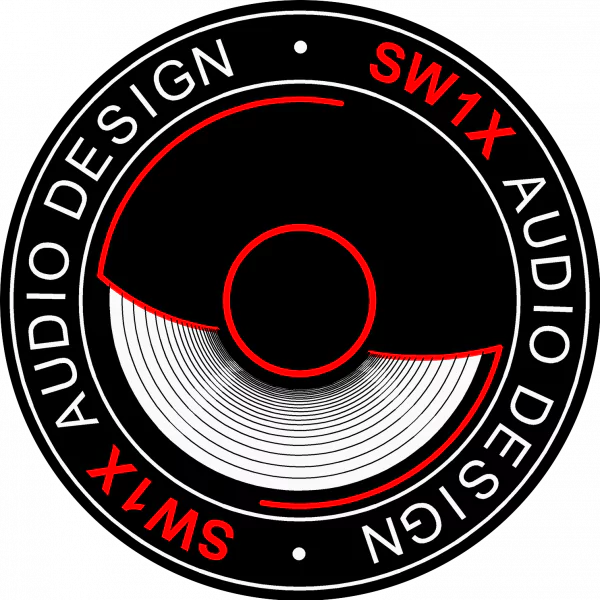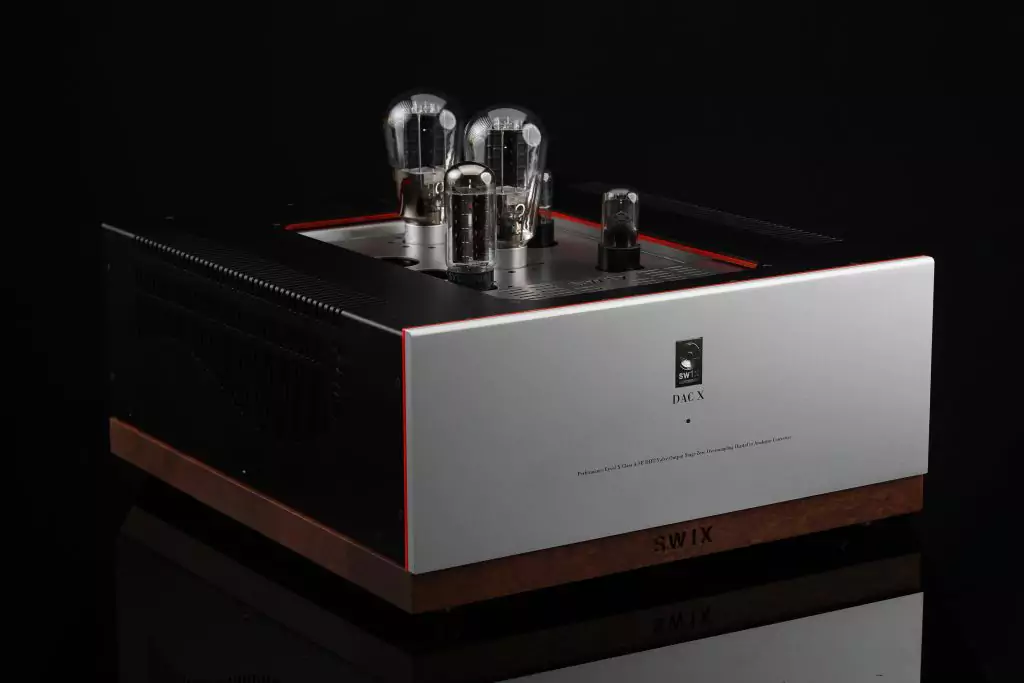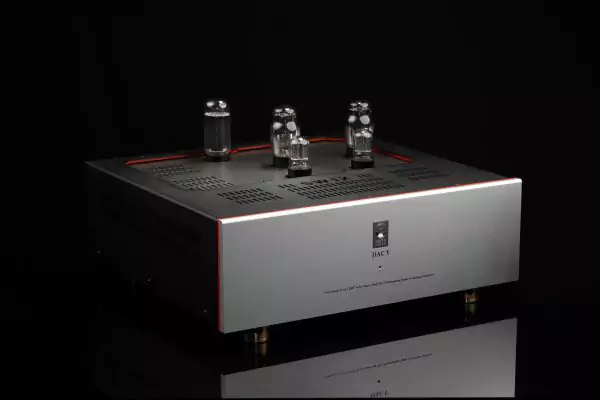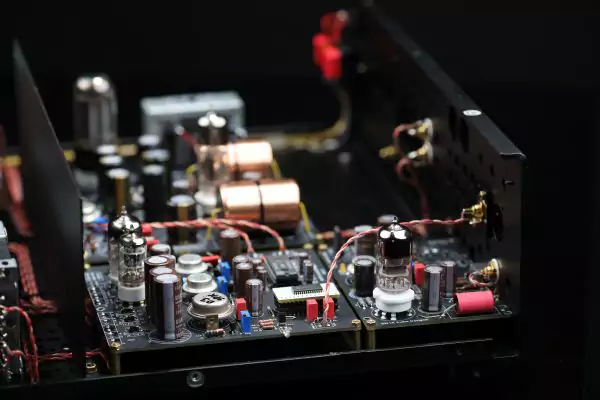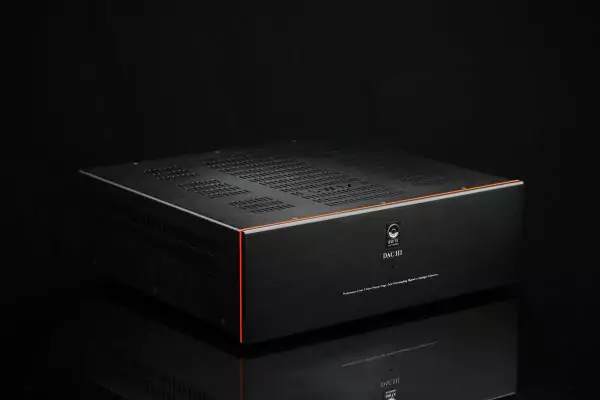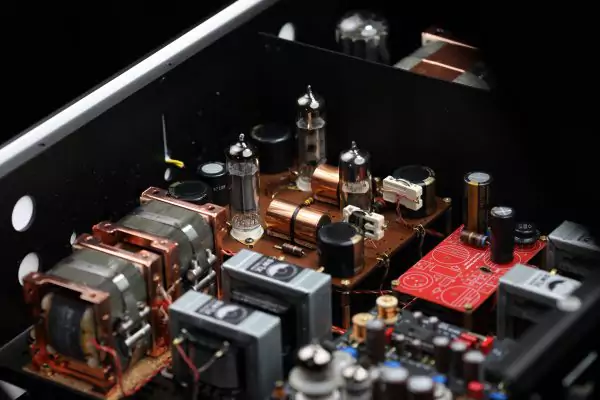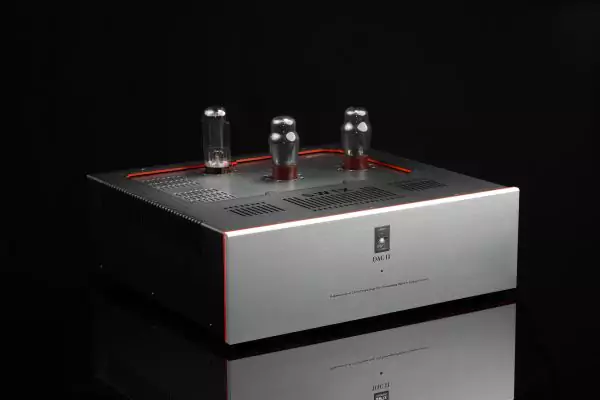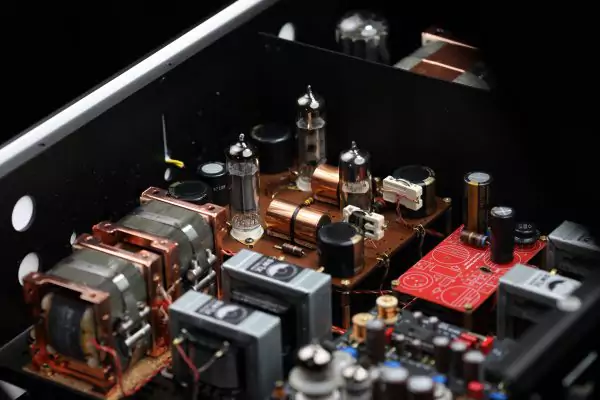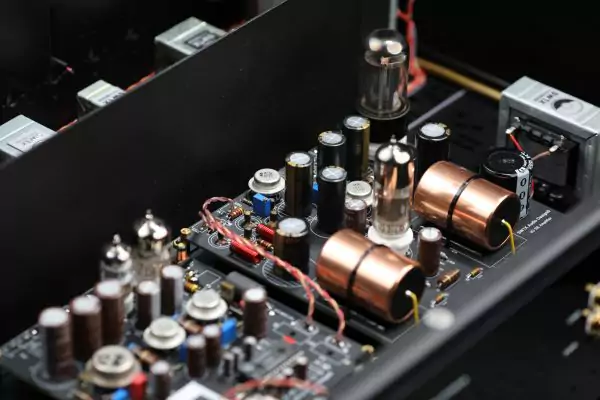What is a R2R DAC?
A reflection on digital to analogue conversion concepts based on theory and practice
There is a never-ending debate on the topic of what sounds better: Delta Sigma (DS) or R2R (R/2R or resistor ladder) DAC designs. First of all, it makes little sense to prove what is better in theory because there infinite number of variables of implementation in designing and building a DAC. The analogy would be to prove that all apples are better than pears. In order to substantiate any claim, one needs to compare a typical sound of a DS DAC design with a well designed NOS (non- oversampling or digital filterless) R2R DAC design. Those who tried a decent digital filterless R2R design such as the popular NOS TDA1543, know its naturally musical sound character. Having said that, let us also not forget that it is not just about a type of a DAC chip. What surrounds it is equally if not more important such as power supplies, I/V conversion stage, SPDIF receiver (if there is one) and an output stage. Also in practice, there is so much more to it. The design of the circuit and the choice and combination of components round the DAC chip, last but not least is the digital transport (its role is as at least as crucial as a DAC) – all these factors can make a huge difference.
Why NOS R2R DAC designs tend to sound more natural than Delta Sigma
The R2R DAC design with special emphasis on Non-Oversampling (NOS, without digital signal filter or manipulation of any kind) sounds completely different to the same DAC but with digital filtering or noise-shaping Delta Sigma, digital signal processing (DSP) type (also in form of FPGA) of digital circuit. In the right design, a great R2R DAC in non-oversampling mode presents music in way deeper, more organic and natural way than any DS type of DAC. The analogy is akin to comparison of pictures taken with a) a camera equipped with proper optical lens (non-oversampling R2R DAC) and b) with a camera taken with a digital zoom and a lot of DSP post-processing, done by the software and hardware of a camera (DS DAC). Pictures taken with a) have sense of depth, are more natural in their textures and are smoother in their transients. There is no post-processing and all original data is presented more or less as captured. Pictures taken with b) are flatter, textures are more synthetic and are edgier in the transients as post-processing was applied to interpolate the missing data and all results heavily depends on post-processing algorithm chosen. The same pretty much applies to the sonic presentation. There is obviously more to it than whether the DAC is DS or R2R type but overall it is a valid analogy as long all other variables are kept equal.
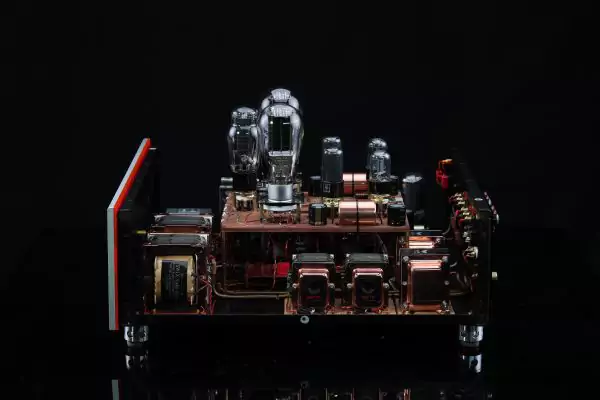
It is true, the specs of Delta Sigma (DS) chips may look better on paper. In practice, however, they are incomparable to R2R. The stated accuracy numbers of DS DACs are post modulation (after digital filtering has been applied) and are not always attainable in practice for a number of reasons (such as quality of power supplies and imperfections of components & materials, which apply to both R2R and DS) even if your recording comes in the HD PCM or DSD format (which is a modulated 1bit pink noise). One must admit that oversampling, demodulation and noise shaping (read more about it here) is a clever concept to manipulate the digital signal carrying musical information. Yet in practice there is no free lunch- all digital signal manipulation comes at a cost – musicality that is. Since part of the Delta Sigma conversion process (similar to switched power supplies) is a high frequency pink noise, it requires a lot of digital filtering or oversampling and noise-shaping. Essentially, oversampling is a corrective process, which needs to sort the digital data in the signal and come up with bits that are not are not a part of the original data stream. These bits is a missing information we do not have (not part of the recording), so they need to be invented (process called interpolation) and then noise-shape filtered. Noise-shaping and overs-sampling process are essentially adding artificial information (artifacts) not present in the original samples. All that noise (the reason why it is called noise shaping) with additional artifact samples (which are not part of the original recording) are filtered with a demodulator which relies on the reduced original data by means of a negative feedback loop. The claimed resolution of a DS DAC is of its demodulator after all the digital filtering and not of the data stream itself (which is nothing but noise, please refer to the picture below). In a nutshell, all DS DACs produce filtered noise (which requires demodulation), which we perceive as a sound after a corrective digital filtering (in over-sampling) is applied. Now that sound could be characterized as clear with a lot of perceived details, however at the same time music tend to sound synthetic & flat without coherence and precision without exception regardless which interpolation algorithm is used. Music however is more than just a collection of noise reconstructed sounds.
The concept of negative feedback loop and its devastating effect on music can be found here. Music is defined by a strict relationship between signal and time. If the musical signal is altered relative to its time domain then one hardly can call the resulting sound “music” by the definition. Any shift in relationship between signal and its time domain is called phase (time) /signal amplitude distortion (or jitter in digital domain). The main cause for phase distortion is the deliberate use of digital filtering, higher order filters and by negative feedback loop manipulation in order to achieve better linearity. In terms of distortion, Delta Sigma (DS) DAC designs distort musical information at all times unlike with NOS R2R. That type of distortion (measurable or not) is made up by the noise and artifacts as DS DAC produces completely new samples (not a part of the original recording) by the means of oversampling and the negative feedback applied to demodulate (noise shaping and filtering) an over sampled signal. The effect of phase to amplitude distortion is evident if one compared class- A amplification with a negative feedback (NFB) and without. The sound is more linear with NFB applied and everything sounds sort of nice but in the same time it all sounds the same, lacks natural coherence, harmonics and dynamics, effectively fails to involve one emotionally. And that is the area where Delta Sigma DACs designs fail, really.
All (regardless of type) D to A converters are far from perfect. In theory and in practice, digital conversion can only approximate analogue sine waves with stated theoretical accuracies. However, that does not mean that we should give up on the concept of digital. In practice, both R2R and Delta Sigma designs have larger actual quantization errors than stated in their data sheets. Theoretically, errors of R2R converter are larger on average because of the apparent bit depth limitation, ceteris paribus. In practice though, DS DACs have higher quantization noise and therefore it is perfectly possible that a properly implemented R2R chip could be less erroneous than a decently implemented Delta Sigma chip (a topic for electronic engineers). However, let us not get confused here with different concepts. One of the key factors for the natural sound is the lack of any manipulation in the digital domain, i.e. absence of digital filtering or having a non-oversampled design is a good starting point. There may be a small difference in terms between oversampling R2R and non oversampling, digital filter-less (NOS) R2R designs, however there is a huge difference between those designs in terms of how music sounds. One can have R2R design with oversampling and that design is not much better than Delta Sigma because of the digital filtering involved and is a sort of the worst of both worlds. As matter of fact most commercially available TDA154X CD players came with oversampling, usually with a SAA7322 chip (that is perhaps the reason why most people think that those old R2Rs are obsolete).
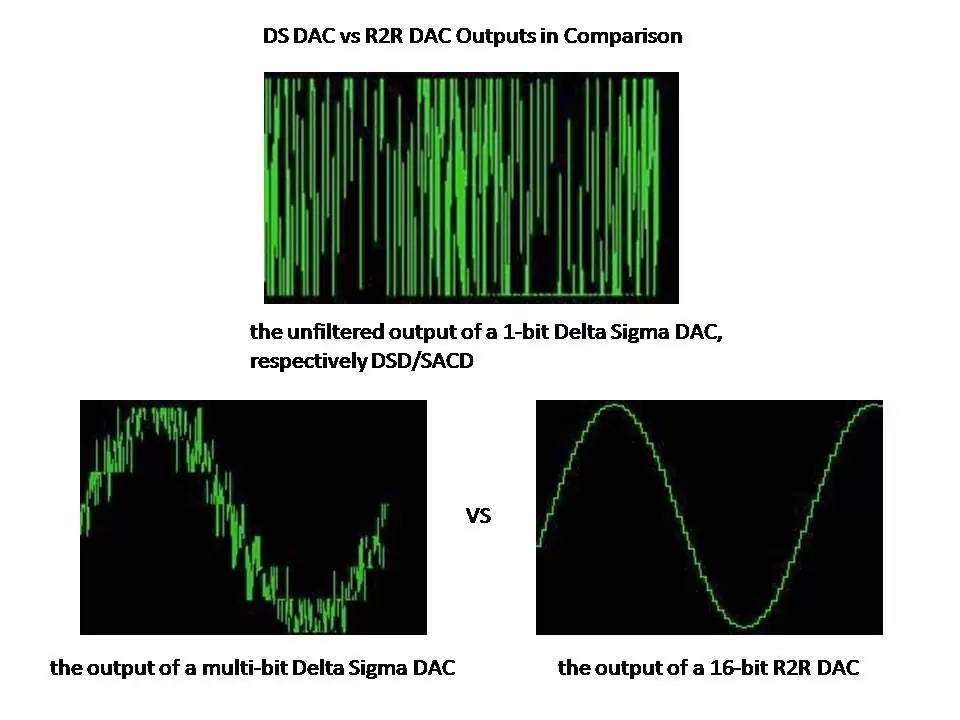
In contrast to the all digitally filtered designs (regardless whether Delta Sigma or R2R), all of the SW1X Audio Design™ are NOS (without digital filter) R2R- a completely different approach. A NOS R2R DAC design sounds much more natural and more musically alive than any DS DAC with digital filters and a corrective feedback loop inherited by its design. However, it must be admitted that there is no DAC design without weakness and even NOS R2R designs have their own weaknesses. One of them is the perceived lack of resolution. That weakness can be actually turned into strength with carefully selected, low distortion, audio capacitors and optimised PCB and properly designed I/V conversion. SW1X Audio Designs™ only employs finest capacitors & resistors around the NOS DAC chips which brings out their true resolution to the maximum. This way, the NOS R2R is in no way inferior to Delta Sigma and one could say quite on contrary. We would even go as far as saying that our NOS R2R designs could easily outperform any modern Delta Sigma design even with the ones with the claimed 32 bit resolution (of the demodulator, after noise shaping and interpolation). The other weakness is monotonous and predictable character, which true for all DAC chips. Those weaknesses are curable with high quality voltage regulation, rectification and careful SPDIF receiver IC tuning. Last but not least is the lack of energy and perceived dynamics. That issue is partly due to choice of materials and components, I/V conversion technique and the choice of an output stage. The later part is plagued by impedance mismatch in almost all mainstream designs with a few exceptions.
The issue of impedance mismatch is critical in 2 places of a DAC design: A) Between the current out of DAC chip after the current to voltage (I/V or I/U) conversion and B) Between the first amplification output stage and the preamp/power amp input. Most common approach in the current out (best possible quality output of an R2R chip, which is impossible with Delta Sigma chips) DAC implementation is to use a passive shunt resistor as I/V converter. This approach works fine but has some drawbacks: the shunt resistor worsens the impedance mismatch further and it takes energy away, therefore some of the dynamics are irreversibly lost and all subsequent stage are lacking the drive. We, at SW1X Audio Design™ on the other hand, addressing the point A) by using a single transistor that does the job of I/V conversion, lowers the output impedance after the I/V stage (the DAC chip sees only 10 Ohm input impedance) and preserves the dynamics. Plus this approach allows us to use a simple but elegant class A, zero feedback valve output stage with low output impedance, which addresses impedance mismatch issue in the point B). On top of that the circuit remains elegant and simple and makes the music come alive with incredible dynamics and extreme analogue smoothness.
So, the question is what is really better? A) NOS R2R DAC characterised by brute force, real time, true resolution resistive voltage divider network conversion with all the imperfections of the original data and conversion errors or B) Delta Sigma chip producing accurately filtered 1bit (or more bits) pink noise manipulated by a clever algorithm with all the corresponding artifacts and phase /signal amplitude distortion? The answer to that question could only be answered after an in depth critical evaluation based on real world examples. It would also depend on whether one would like to listen to music or to sounds. In our book, music is a time continuum from start to end which when broken is irreparably damaged and no amount of clever digital manipulation can restore it to its original time / frequency / amplitude duration or relationship.
Some people would consider the classic Philips TDA1543 or the TDA1541 (and many other older resistor network (R2R) based DACs) as old fashion and obsolete. That may be justified given its age however the R2R DAC is far from obsolete. Zero oversampling R2R DACs can never be out of date if they sound great. It would be a mistake to write off the R2R DAC just because it is not the most modern technology. The non-oversampling DAC is very musical and analogue sounding in nature (a feature that stands out among all modern Delta Sigma type of DACs) even with sub-optimal choice of components and circuit design. However, the DAC itself is just a starting point as the rest of the circuit can either “make it shine or break it”. The circuit implementation is even more critical than the DAC on its own. The main reason for the prejudgement is that many people have not heard the non-oversampled (zero digital filtering) implementation at its full glory: with discrete shunt regulated Germanium transistor power supply and a discrete and active I/U with a single ended, class A, zero feedback valve output stage. If DACs were cars and one considered our circuit design and the materials we employ together, the DACs that we offer would resemble something like an old timers– to me they are classy ones. It is very interesting to see how an old timer (DAC that is based on established and optimized technologies) compares to the latest most modern & cost-saving technologies like bit-stream, aka Delta Sigma and DSD based DACs, which rely on digital filters (that also remove the soul from the music). There is a huge difference how both technologies present spatial information, dynamics & harmonics. Timbres sound much more natural and more accurate on non-oversampled (no digital filtering) designs, while everything sound homogenized and flat on oversampling DACs. That is one of the reasons why Delta Sigma technology is not a part of our designs. When a true 16 bit resolution, non-oversampled R2R DAC sounds vinyl or reel to reel tape alike in terms of perceived resolution than I would say we have not progressed much in audio particularly in the last 30 years. I would go further to say there has not been much of a progress in sound since the technologies (valves and transistors) were invented. It may sound provocative but I leave to our customers to decide.
Dr. Slawa Roschkow, 11. 2015
Read more about the best R2R DAC design & technology
A couple of useful links for further reading:
http://www.soundfountain.com/amb/noisesheng.html
http://www.sakurasystems.com/articles/Non-oversampling-DAC.html
http://www.dutchaudioclassics.nl/history_of_the_Philips_tda_d_a_converter/
http://www.dutchaudioclassics.nl/philips-tda1541.asp
Follow us on Facebook, Instagram, YouTube and Pinterest. Join the official SW1X Club
